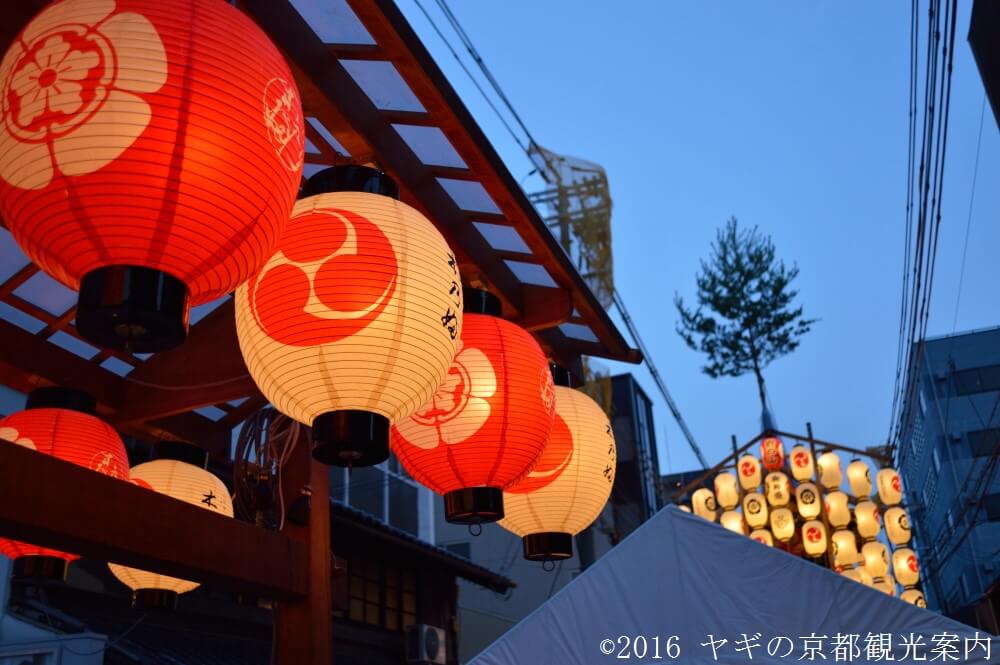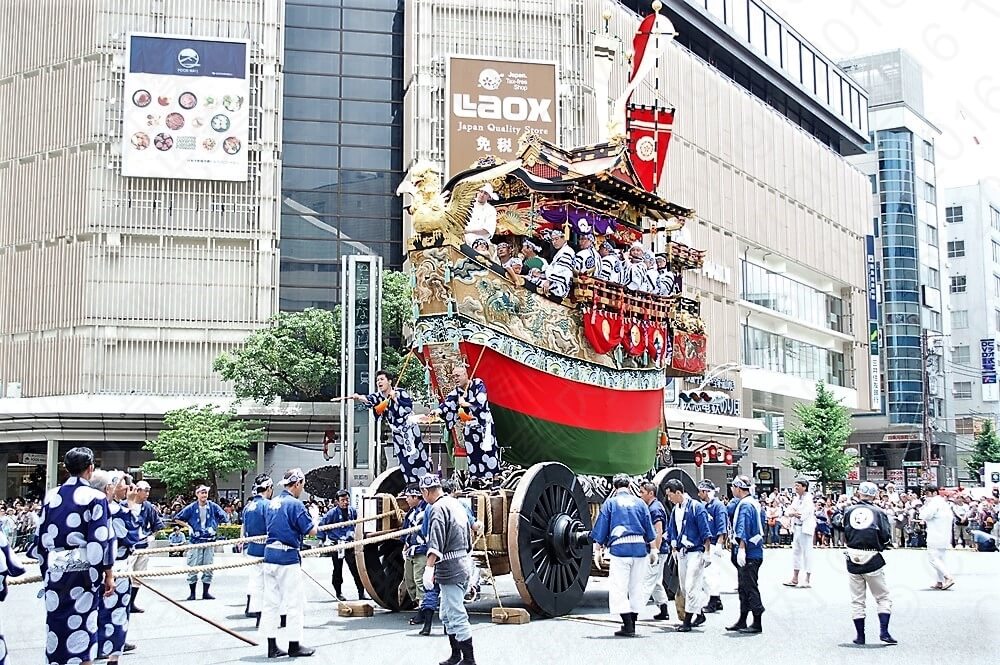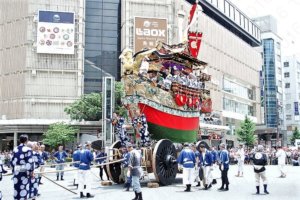THE GIST OF THIS ARTICLE
- This page Introduction of the parade
- Page 2 Yamahoko in Sakimatsuri
- Page 3 Yamahoko in Ato Masuri
- Page 4 Types of Yamahoko
- Page 5 A short history of Yamahoko parade
The following is the contents of this article.
Overview
On 20 April, Yasaka shrine announced that Yamahoko parade 2020 and Yoiyama was canceled due to COVID-19. In early June, it will decide whether Yamahoko-building takes place or not.

IF you were interested in Gion matsuri, check the link below, BAAH!!

What is Yamahoko/Yamaboko parade?
Overview
In Yamaboko/Yamahoko parades, Yamahoko floats stroll in the down town of Kyoto on 17(Sakimatsuri) and 24(Atomatsuri) July.
Yamahoko or Yamaboko, both pronunciations are available. Yamaboko means Hoko, Yama, and Yatai. (I’ll show you examples later.) We have 8 Hoko and their names have the word “鉾” like a suffix ; Naginata 鉾, Tsuki 鉾, and so on. “鉾” is pronounced as “Hoko,” if it appeared alone. On the other hand, when it is put after a word, it can be pronounced as “Hoko,” or “Boko.” There is a common rule the way to pronounce the letter in Japanese language but there is a local rule about Yamahoko float: It depends on a district which each Yamahoko belong. As you can imagine, it leads us confusion. So, when Yamaboko was designated as UNESCO Intangible Cultural Heritage, it was decided that 鉾 was to be pronounced as “Hoko.” To avoid the confusion, I’ll use “Hoko” later in this article though I say “Naginata boko,” or “Tsuki boko” in colloquial way.
Yamahoko floats are sometimes referred as “Mobile Museum” but it is a byproduct. They play roles of “Yorishiro.” Yorishiro is an object to which Deities descend to. To them, “Ekishin” Deities descend. Ekishin is a Deity who bring us malady. Ancient Kyoto often suffered epidemic and people thought Ekishin caused them. They asked the Deity of Yasaka shrine (It was called Gion Kanjin in those days.) to put them down. This is a purpose of Gion Matsuri (It was called Gion Goroye in those days.) still exists today.

Yamhoko floats are Yorishiro. The Deities of Yasaka shrine come to a downtown of Kyoto on Mikoshi to put down Ekishin Yamabok floats gathered. THIS IS GION MATSURI. Check the link below!

Yamahoko parade takes place 2 times: In Sakimatrusi and Atomatsuri. There are 23 floats in Sakimatsuri and 11 floats in Atomatsuri. Their turns in the parade are decided by lot but the turns of some floats like Naginata hoko are fixed.
In Sakimatsuri, each float depart Kaisho (a kind of headwaters of it) and gets on Shijo street and comes back to Kaisyo by way of Shijo Kawaramach, Kawaramachi Oike, and Shijo Karasuma. Atomatsuri is vice versa.
How does the parade go on?
General info.
In this chapter, we’ll see interesting events in the parade.
Kuji Aratameくじ改め

ビデオはあとでつくるからまっててね
As I referred in the previous chapter, the turns Yamahoko in the parade depends on lot except some examption. A check point at Shijo Sakaimachi crossing, a kind of delegate of Yamahoko shows a lot it drew. The lot is in a box folded with strings. The delegate unfold the strings with his folded Sensu, a traditional fun. Bugyo (Mayer of Kyoto city) makes sure that the hoko is in an appropriate turn. With his permission, Yamahoko pass the check point. This custom started in 1500 for the purpose of the fairness Yamahoko engaged in the parade.
Cutting off “Shimenawa” しめ縄切り
At Shijo Fuyacho, there are two bamboos. The tips of them are connected with Shimenawa rope. This rope tells the secular world and the sacred one. Ikichigo on Naginatahoko cut the rope off and Naginatahoko enters the sacred world and Yamahoko parade begins. (In the video, around 6:00, he cuts off the rope.)
Ikichogo perfoms “Chigomai” dance performance.
Tsuji Mawashi 辻回し
Yamahok floats turn around at least three times en route. The turning around of them is called “Tsuji Mawashi (To make floats turned around at crossing).” Hoko, Hikiyama and Yatai have four wheels but have no staring wheels. People tow them put slivered bamboo under the wheels and spray water over them as lubricant and pull the ropes to make Yamahoko turned.




